10 Top Tips To Shoot Lower Scores - When It Matters
Simple things you can do to live up to your potential and score better without overhauling your swing
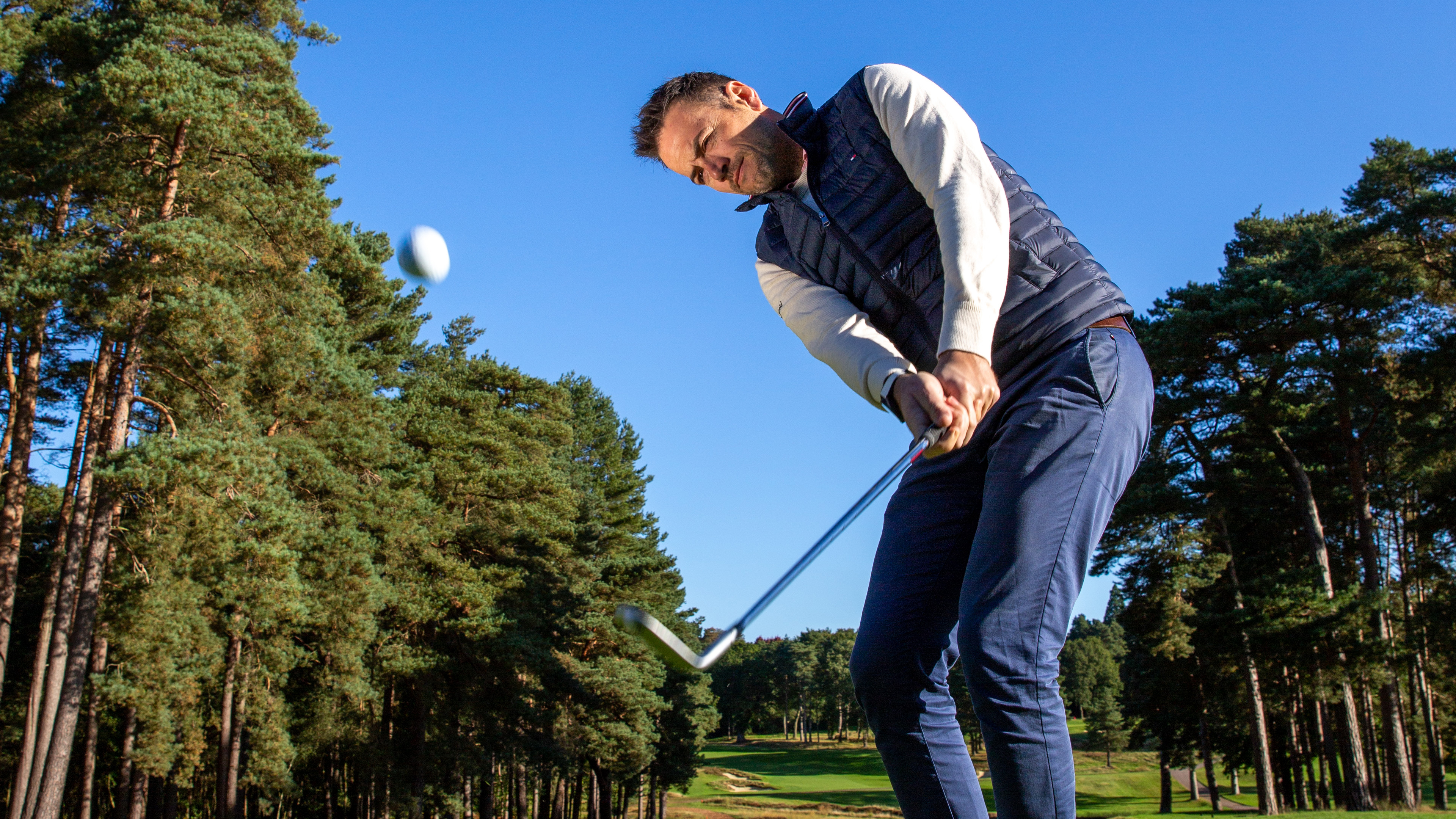
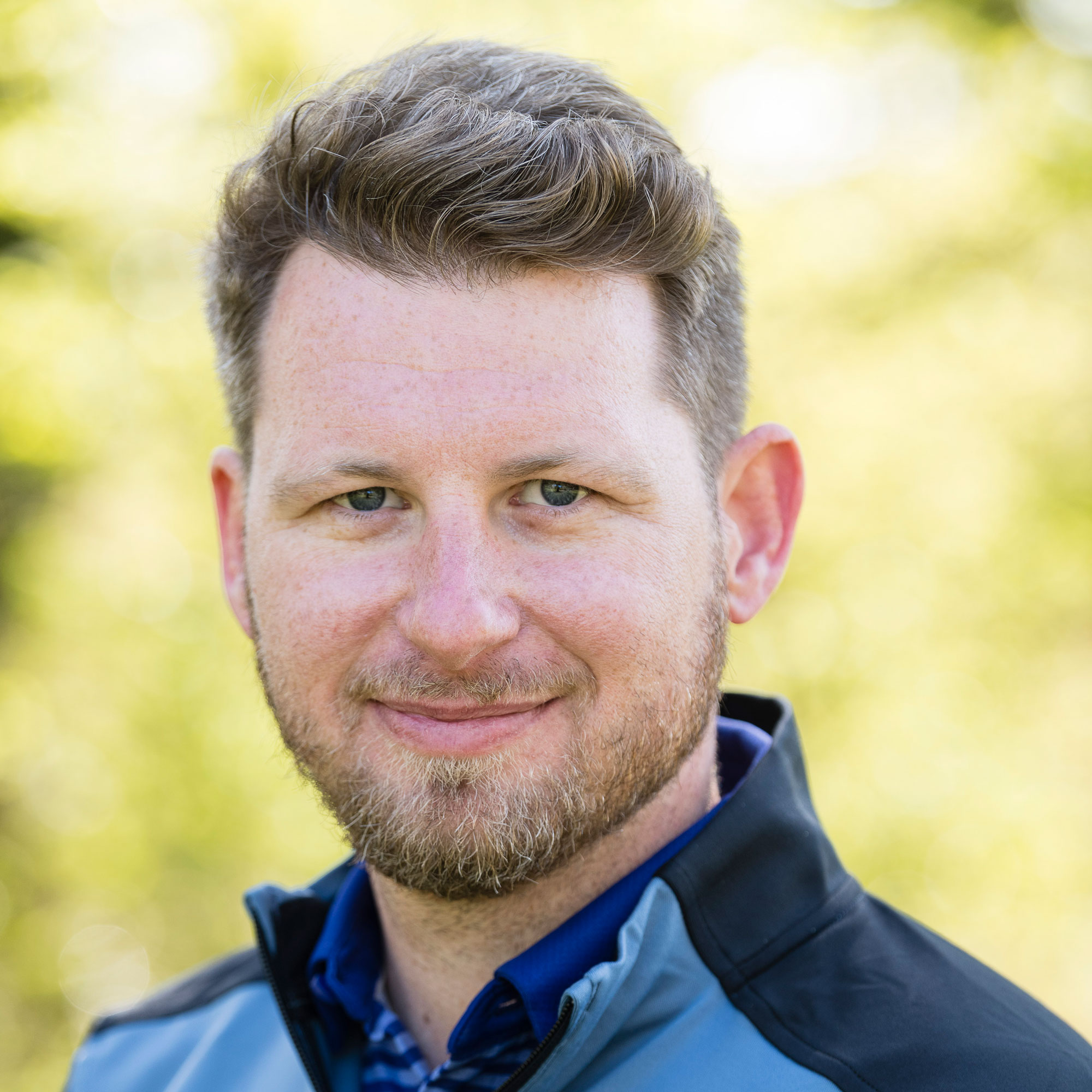
We all want to play well every time we tee it up, but the reality is that very few of us play to our potential at all, let alone in the ‘big rounds’ when we really want to. The good news is we've got 10 top tips to help you shoot lower scores the very next time you play without overhauling your swing.
Greater understanding of your game, better strategy and decision-making, a more positive mental approach, and equipment that’s right for you can all help you play better and more consistent golf.
To discover how to do this, we asked TaylorMade ambassador Nick Dougherty to give Golf Monthly editor Mike Harris a playing lesson around Wentworth’s famed West Course.
Over the course of the lesson, Dougherty shared a treasure trove of insights that will help Mike – and you – live up to your potential.
And for more brilliant advice on how to make the game a little easier, watch Nick's Tee-Time Tips videos on Instagram.
10 Top Tips To Shoot Lower Scores
1. Play to your strengths
The first part of this is identifying what your strengths and weaknesses are. There are a number of fantastic shot-tracking devices that are available to gather and analyse your data, from the simple things like fairways hit, greens in regulations, successful scrambles and number of putts, to more advanced stats like ‘strokes gained’.
Get the Golf Monthly Newsletter
Subscribe to the Golf Monthly newsletter to stay up to date with all the latest tour news, equipment news, reviews, head-to-heads and buyer’s guides from our team of experienced experts.
Recording your own stats manually for a few rounds will also give you a good snapshot. Once you know them, simply favour your strengths and avoid your weaknesses.
If you’re struggling with driver off the tee, use a three-wood or hybrid instead. If you hate playing from bunkers, hit clubs off tees that completely take them out of play and aim safely away from them on approach shots, and so on.
Hit more of the shots you're good at and fewer of the shots you’re bad at and your scores will benefit.
2. Commit to every shot
Make sure you’re ‘all in’ every time you hit a shot. There are usually so many options and thoughts going through your head that you don’t quite fully commit to the shot you’re actually about to play – and that makes it hard to have a good outcome.
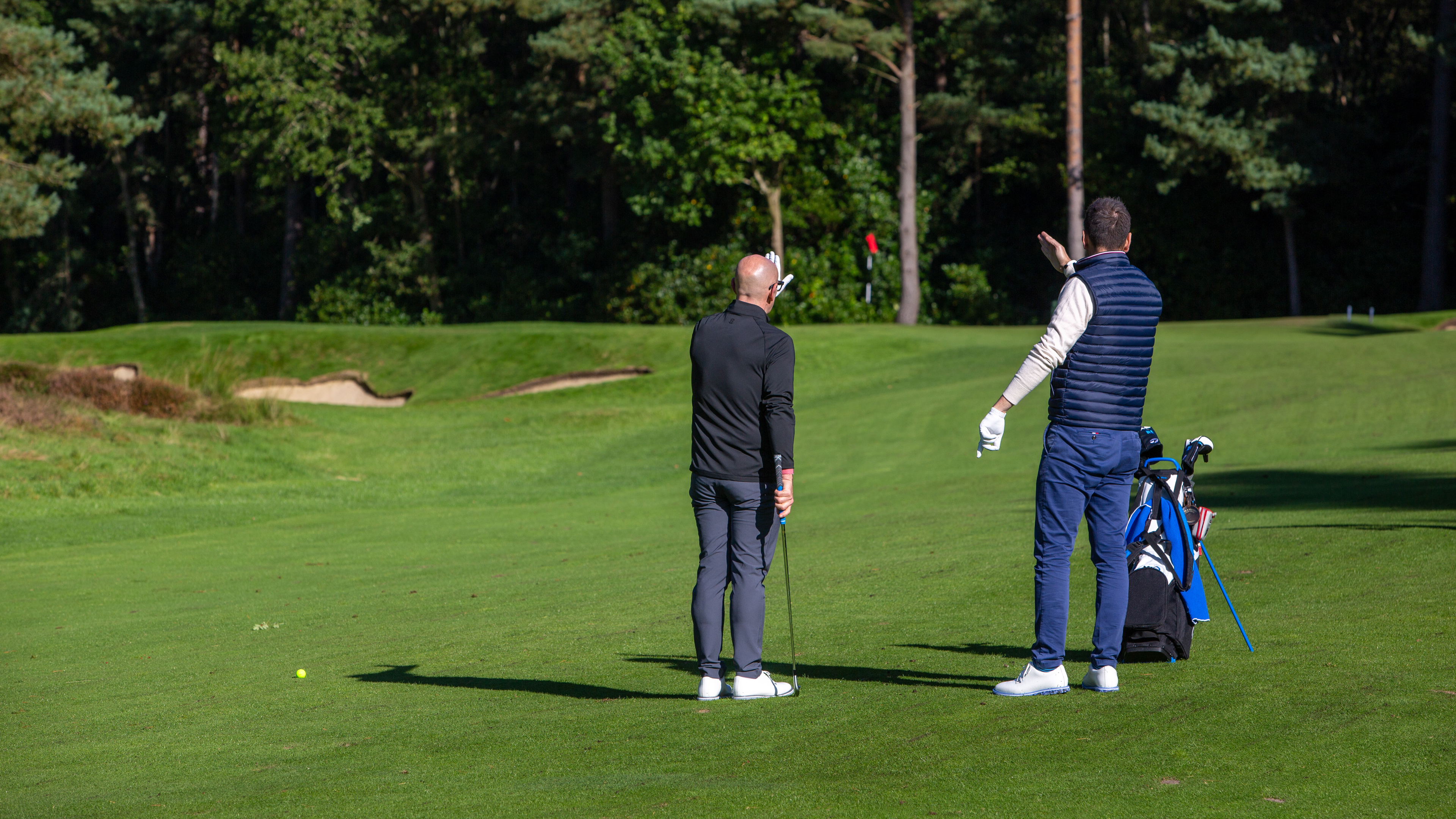
Pick the club and shot you want to play and commit
Once you’ve decided the club and shot you’re playing, forget everything else and totally commit to it. This becomes even more important when the round or shot is really important to you because you attribute greater consequence to the outcome. That’s when you start trying to guide it, which never usually ends well.
Stop worrying about the consequences and simply focus on hitting that shot with total commitment.
3. Get custom fit clubs
The right clubs for your game can make your good shots better and improve your bad shots. Your score is often determined by how bad the poor shots are rather than how good the better ones are, and the quickest way to improve scores is by reducing the bad ones.
Mike went through a full bag custom fitting with TaylorMade and immediately benefitted from having the optimum set-up for him. The benefits of the correct driver, woods and irons for your swing and launch conditions are well-documented, but the right lofts, bounce and grind on your wedges and a putter that compliments your stroke will also make a huge difference.
4. Accept golf is a hard game
The bottom line is golf is really difficult and even the best players in the world hit bad shots and shoot over par, so don’t put too much pressure and expectation on yourself. Stop chasing perfect shots and don’t be hard on yourself when you do inevitably mishit some.
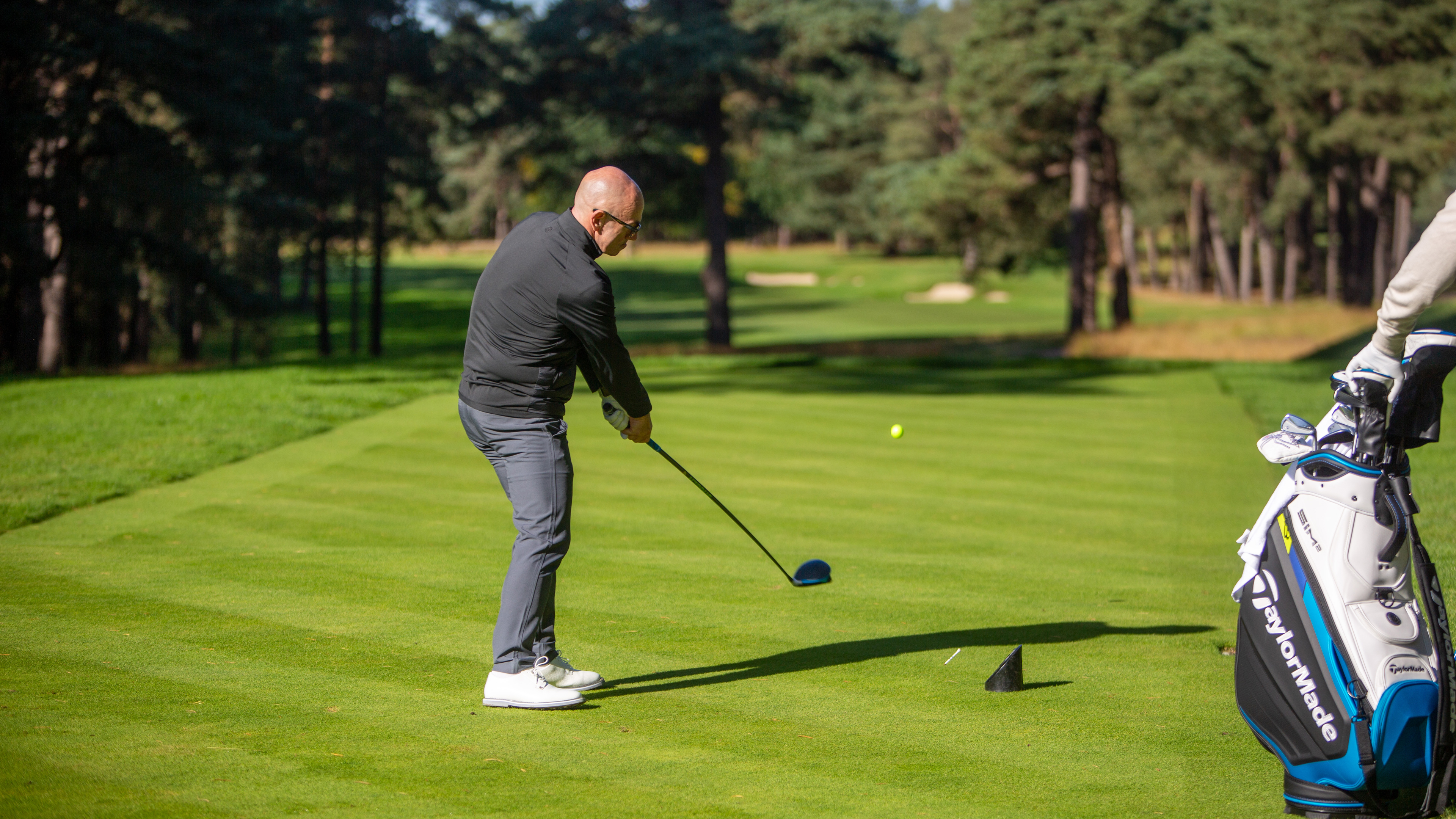
No matter the level, bad shots happen. Accept them, move on and learn to enjoy the good ones
One bad shot will only ruin your round if you let it. Remember the good shots after the round, and forget about the bad ones - quickly.
5. Improve your posture
This is another fundamental that's really important, and Mike benefitted from improving on the day. With poor posture it becomes impossible to make a good swing. It's often over-complicated but there’s a simple way to get into an athletic position.
Related: How To Set Your Spine Angle
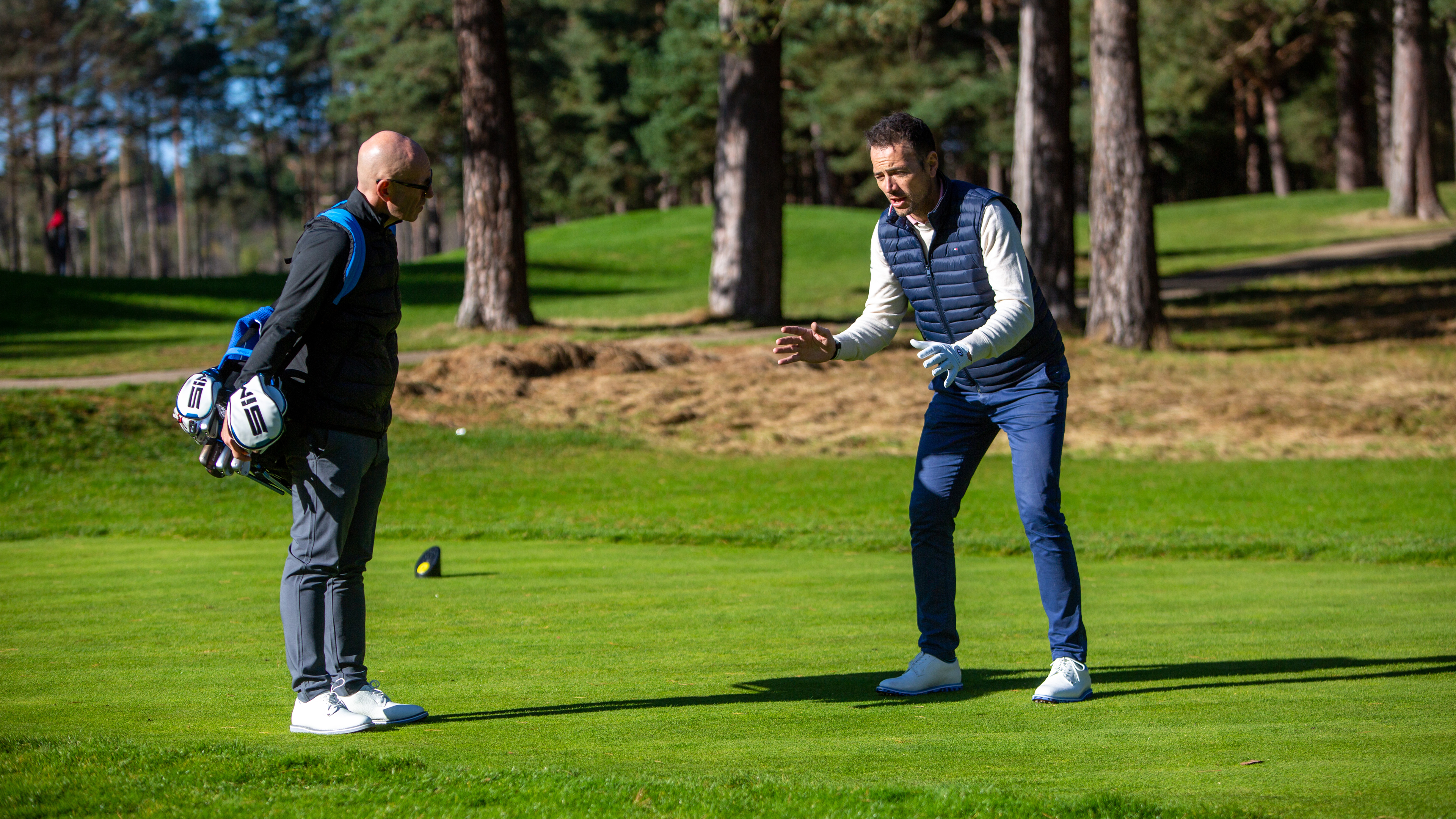
Use this simple trick to get into a more athletic position at address
Just imagine you’re a goalkeeper about to face a penalty. You’ll naturally adopt a dynamic position with the weight on the balls of your feet, a little knee flex and a good spine angle and head position. The only difference for golf is that you drop your arms and hands to hold the club.
6. Identify the correct yardage
There’s nothing more frustrating than making a good swing and hitting a good shot but the ball not finishing near your target because you used the wrong club. Firstly, identify the distance to where you want the ball to land. This isn’t often where the flag is – you usually want to aim on the safe side and allow for run based on ground conditions.
Then factor in other elements to get the yardage that shot is actually playing. Uphill shots will play longer, and downhill shots play shorter. Most rangefinders have a slope function that tells you how much a shot is playing up or downhill. This isn’t legal in competition, but you can use it in practice to get a feel for how much different slopes affect the yardage.
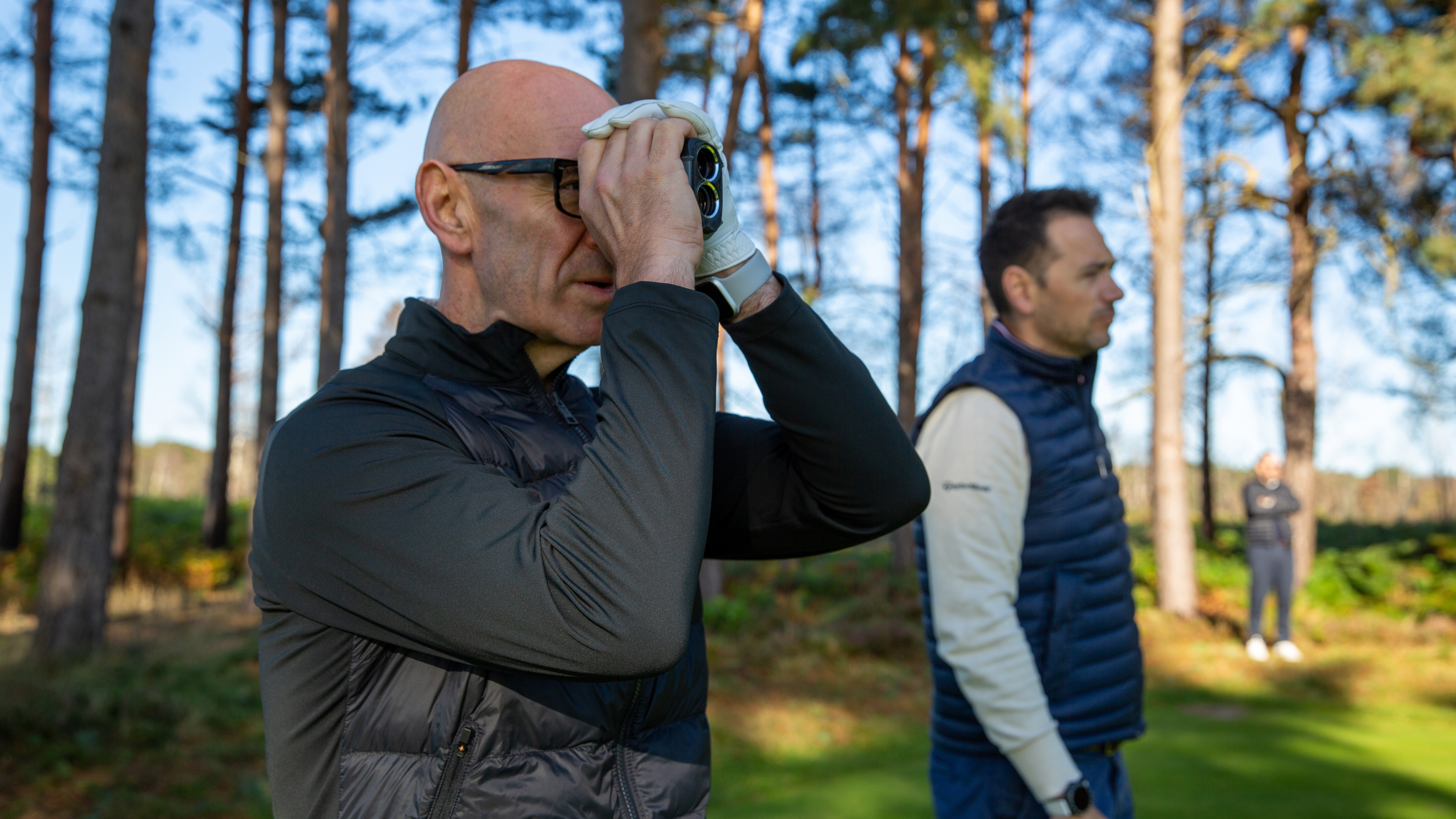
Identifying the best yardage for each shot requires more than just zapping the flag with a rangefinder
Wind is also significant but it’s not always consistent. A shot into the wind will play double the yardage longer than the same shot downwind will play shorter. For example, a shot 10mph downwind will play roughly 10 yards shorter, but into the wind it'll play around 20 yards longer.
Related: Best Golf Laser Rangefinders
The ball will also travel further in warmer conditions and at higher altitudes. You also don’t want too much spin into the wind so it’s better to club up and swing smoothly. Take this all into account to calculate a ‘playing yardage’ and pick your best club for that based on the average distance you carry each club.
You can assess the wind before heading out by looking at any weather forecast for your local area and overlaying that information onto a course map.
7. Don't compound your errors
It’s important that you never follow one bad decision or shot with another. When you’re playing a recovery shot, the most important thing is that you get the ball back in play. Forget your ego and resist the temptation to go chasing a wonder shot.
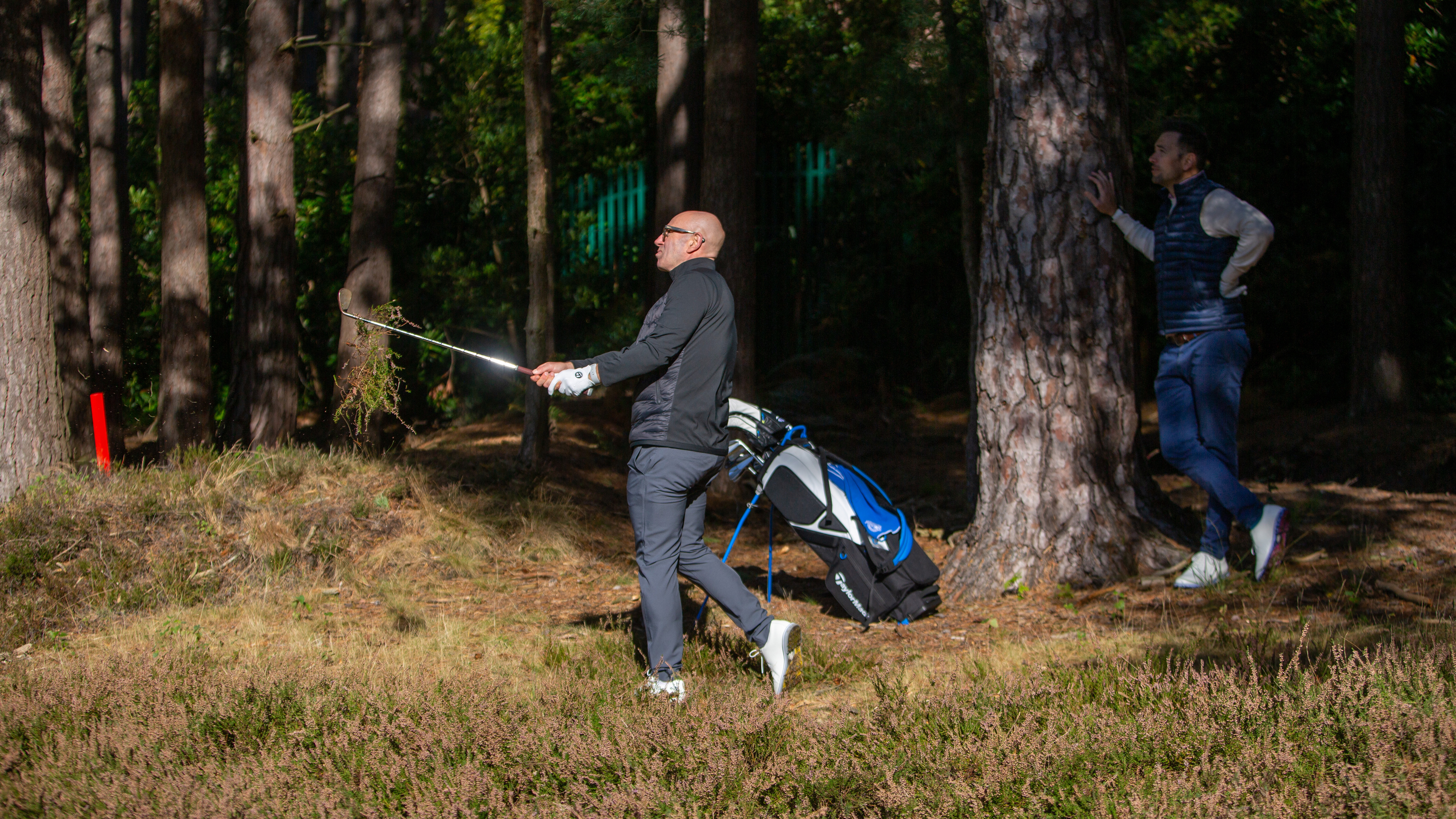
When in trouble, resist the temptation to take on the hero shot
Remember, you just missed an entire fairway or green to get into this position so don’t try and hit a smaller target to get out of it. Take your medicine and ensure your next shot is from the fairway after a poor tee ball, or anywhere on the green following an errant approach – even if you have to accept you’ll be further from the hole.
8. Keep the short game simple
Always play the simplest shot you can around the greens. In most cases, this means taking as little loft as possible. Aim to land the ball a yard or two onto the green and use the loft required to release the ball to the hole.
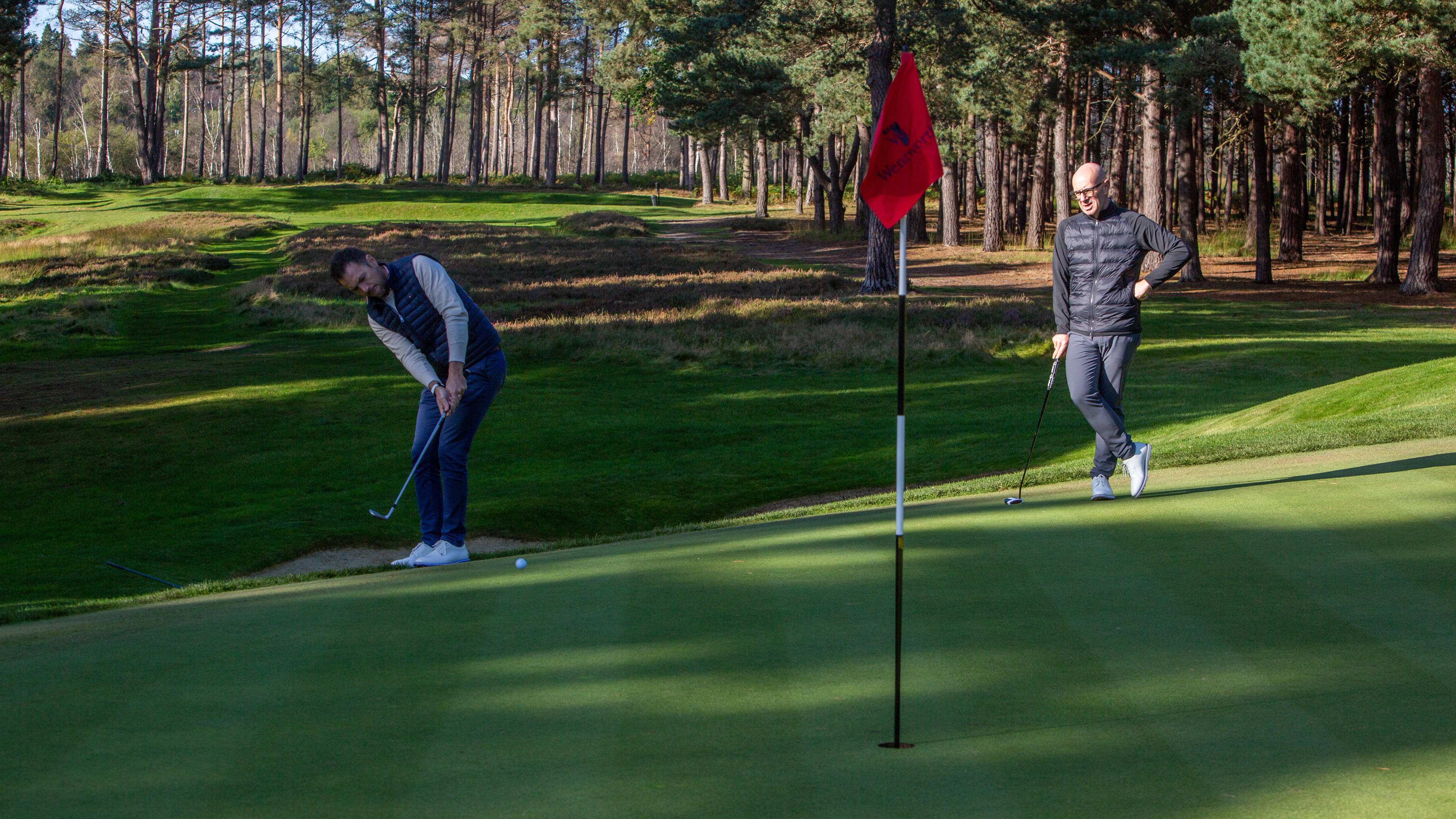
Having a consistent landing spot and altering the club to suit the shot can simplify this part of the game
For a short flag, that might mean hitting a sand wedge, a pitching wedge if it’s a bit further, and even down to a mid-iron if it’s a long chip. Low, running shots are far more predictable and easier to control than high, spinny shots – and the technique to play them is simpler.
Treat them like a putt with your feet close together, choke down on the grip and rock your shoulders to hit the ball.
9. Putt with freedom
It’s easy to get nervous and tense on the greens because a putt has a finite outcome – you make it or miss it. Mike also admitted he feels more pressure over birdie putts than ones for par or worse, even if it’s exactly the same putt. But you will putt better when you’re relaxed.
A great way to free yourself up is to say ‘back’ as you make your backswing and ‘roll’ on the way through. You can also try focusing on breathing in on your backswing and then breathing out on the way back.
10. Eliminate yardage gaps
Make sure the clubs you have don’t leave you with any big yardage gaps, especially in your wedges. Prior to his fitting, Mike had big gaps between 190-210 yards and 90-110 yards.
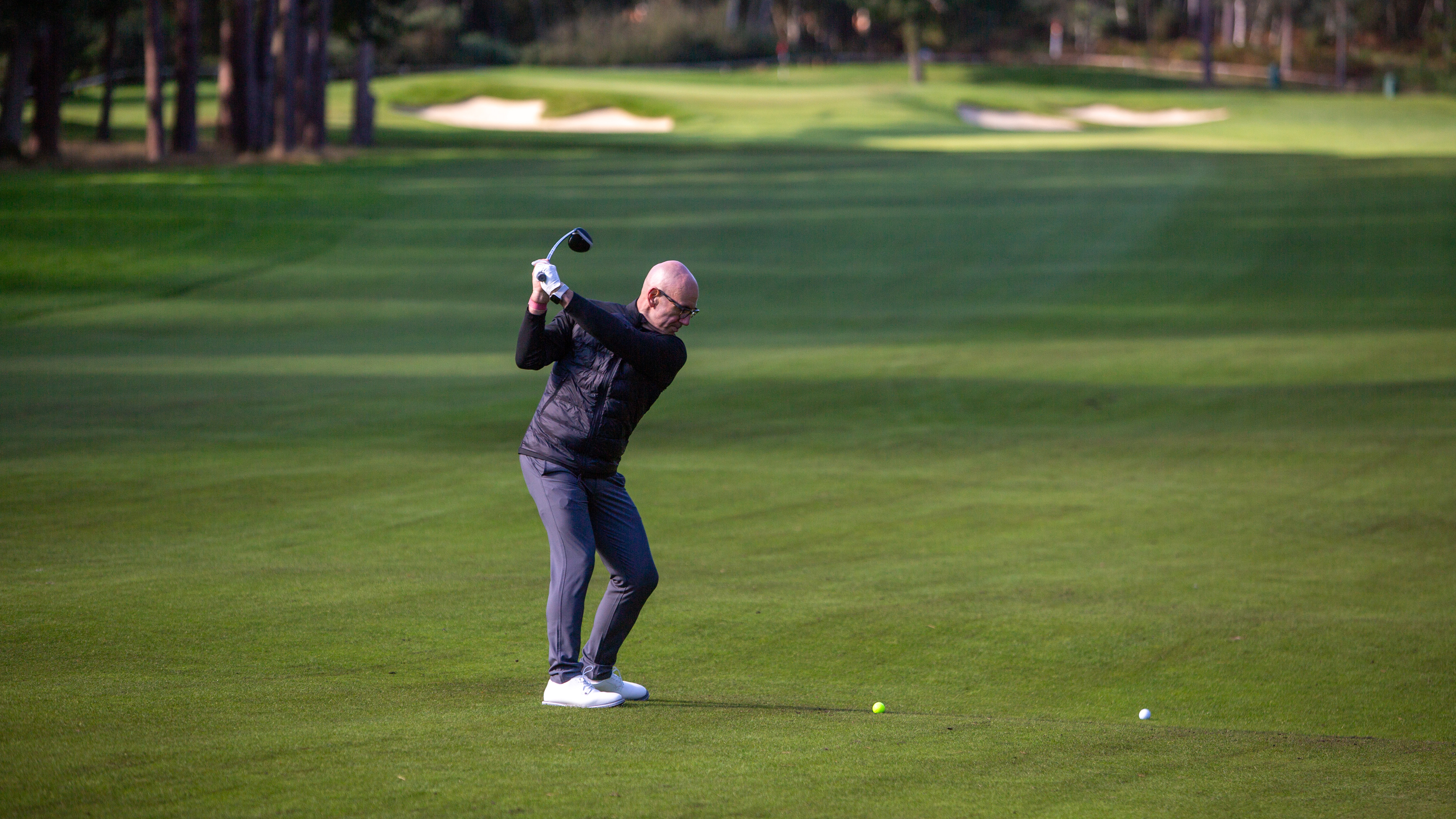
Filling any gaps in your set will help you get more out of your game
He’s solved that by incorporating a TaylorMade SIM2 Max five-wood, which is a comfortable 200-yard club, and an Approach wedge as part of his set of P790 irons, as this gives him more consistency on full shots than a traditional bladed wedge.
Knowing how far each club goes and having consistent gapping throughout your set makes it much easier to hit the right club.
Make sure you watch the full video to see how the lesson unfolded and hear even more tips and insights from Nick and Mike that are guaranteed to help you score better when it really matters!
Kit Alexander is a golf broadcaster and journalist who commentates and presents for the DP World Tour, PGA EuroPro Tour and Rose Ladies Series. He has over 15 years’ experience of magazine and television work in the golf industry and is a regular contributor to Golf Monthly.
-
 Rory McIlroy vs Bryson DeChambeau: Who Are We Picking To Win The 2025 Masters?
Rory McIlroy vs Bryson DeChambeau: Who Are We Picking To Win The 2025 Masters?We're set up for a blockbuster final day at Augusta National where Rory McIlroy and Bryson DeChambeau play together in the final group
By Elliott Heath Published
-
 The Masters Crystal Rory McIlroy Has Already Won At Augusta National This Week
The Masters Crystal Rory McIlroy Has Already Won At Augusta National This WeekMcIlroy leads going in to the final round at Augusta National, with the four-time Major winner already bagging some silverware before he looks to claim the Green Jacket
By Matt Cradock Published